Improve office environments with pendant lighting
Pendant light fixtures provide a versatile layer of lighting for open plan offices, private offices, home offices, conference rooms, reception areas, seminar rooms, drafting and graphic production rooms, showrooms, work areas, and public areas in a commercial building. Office lighting must address a variety of human needs that include the demands of effectively and efficiently illuminating differing tasks within the workplace as well as high user expectations for an appealing, attractive and comfortable environment. Whether it is to deliver high quality task lighting that support visual performance, or to create ambient lighting that can spur innovation and boost productivity, pendant lighting is deemed of a great choice for office environments.
Qualitative, user-centered office lighting design
Qualitative lighting design for offices attempts to integrate lighting with the human needs, architecture, and economics and the environment. Compose the lighting itself in layers can best satisfy the needs of the occupants of the space, help achieve high energy effectiveness without impairing visual conditions, and accomplish the aesthetic intentions of the architecture. This places high demands on the form and function of the light fixtures. Flush mount ceiling lights and recessed lighting systems (e.g. troffers, downlights, linear trunking systems) are ubiquitous in commercial buildings throughout the world. These overhead fixtures, however, fail to deliver the flexibilities in light distribution and aesthetical design that are essential to a layered lighting scheme.
Pendant lights serve in terms of both form and function
With its enormous diversity in fixture and optical design, pendant lighting can easily elevate the look of a space and produce a more balanced visual composition. Pendant lights are amongst the most visually engaging interior lighting fixtures, and office lighting benefits from them as much as hospitality and residential applications. A hanging light can have a look as inconspicuous as a recessed downlight, it can also be as artistic and grand as a visually commanding chandelier. The suspended fixture can be as functional as a desk lamp that illuminates a workstation with a focused, localized spread of light. It can also be as strategic as a flush mount light that provides a space with overall illumination. Pendant light fixtures can distribute light directly down, indirectly by illuminating the ceiling, or a combination (direct/indirect) of these two methods. The optical design freedom allows pendant lighting to project both horizontal and vertical illuminance in an optimal uniformity and quantity over the area of coverage.
The ugly side of fluorescent lighting
Office lighting had once been the exclusive province of fluorescent lighting which takes on two basic forms: linear fluorescent lamps and compact fluorescent lamps. Fluorescent lighting is essentially a terrible technology because that most of its benefits over incandescent lighting are achieved at the cost of significantly deteriorated quality of light. To obtain a high luminous efficacy, the spectral power distribution (SPD) of fluorescent lamps is over-saturated with blue and green wavelengths. As a consequence, fluorescent lamps perform extremely poor in color reproduction. This technology renders people in workspaces exposed to blue-rich white light that has a correlated color temperature (CCT) as high as 6500 K. The spectral composition of daylight white fluorescent lighting poses risks of blue light hazard and circadian disruption. Another health risk of fluorescent lighting is light flicker. Flicker is a more common problem in fluorescent lamps due to the widespread use of low cost ballasts. Exposure to flicker may cause headache, eye strain, and general eye discomfort and can even trigger seizures or migraines in some people if these light sources are used in office task lighting applications.
LED Lighting brings a new norm
LEDs have become the dominant choice of light source for office lighting. LED lighting promises impressive energy savings without compromising the color quality of light. This capability as well the breathtakingly long operational life of LED systems provides a compelling economic motivation to switch from fluorescent to LED. LED technology offers the possibility to provide energy savings beyond improved source efficiency. Excellent optical, spectral and light output controllability allows LED lights to deliver high optical delivery efficiency, spectral efficiency and intensity effectiveness that translate to greater energy savings. Unlike fluorescent lamps that have limited switching cycles and poor dimming performance, LEDs are semiconductor devices that are inherently dimmable and instantaneously controllable. This lends LEDs the ability to integrate with controls, sensors and connectivity, which unlocks the energy savings potential of lighting controls and enables new lighting applications.
Fixture designs
Office pendant lights are significantly differentiated from their residential and hospitality counterparts in that they do not run the gamut of decor styles. Most LED light fixtures embrace a modern or contemporary design which is characterized by consciously minimalist forms, clean lines, and sleek looks. The design of office pendant fixtures is often dictated by the light distribution requirements of specific applications. For example, office pendant lights are frequently designed as linear fixtures which are able to provide extended illuminance coverage for open-plan offices or long workstations. It is also not uncommon to see round and square designs that enable an extremely uniform distribution of task illuminance over a localized area. Integrated LED system design offers the opportunity to advance beyond legacy form factors and create compelling designs that fuse form and function.
Light distribution characteristics
An office pendant light can be designed to provide direct, indirect, semi-direct, semi-indirect, direct/indirect, and general diffuse lighting. Direct lighting provides maximum optical efficiency by directing almost all of the light downward. Indirect lighting produces thoroughly diffused light from an invisible light source by directing almost all of the light to the ceiling. Semi-direct systems direct 60% to 90% of the light from the hanging light upward while the rest is directed downward. Semi-indirect systems distribute light in the opposite way (10% to 40% downlight, 90% to 60% uplight). Direct/indirect lighting distributes an equal amount light downward and upward, and produces little in directions near the horizontal. These hybrid lighting systems produce minimum glare and eliminate the cave-like atmosphere, which addresses the downsides of direct lighting. A general diffuse hanging light spreads light uniformly in all directions. These fixtures are used in applications where illuminance requirements are moderate and a uniform ambience throughout the space is required.
Construction
Office pendant lights typically come with an aluminum construction which provides strength and style while facilitating heat dissipation for the LED light engine. The LED light fixture is designed with a high level of integration which ensures that the LEDs can work under favorable operating conditions and light can be extracted directly from the source and efficiently distributed. The mid-power LEDs used in pendant lighting systems are distinguished by their thermal stability, luminous efficacy, and color quality. While the efficacy and lifespan of an LED system is the synergistic function of the light source and the thermal, optical, and control systems applied, the color quality of the system is determined by the spectral composition of LED packages.
In the past office lighting systems had been characterized by poor color rendering and high color temperatures due to the use of fluorescent light sources. LEDs can be spectrally engineered to deliver radiant power fairly broadly across the visible spectrum, thus enabling faithful reproduction of colors of the illuminated objects. Office lighting uses light sources of 3500 K to 5000 K. The selection of light source color is governed by considerations in the visual, biological and emotional effects of light. While cool light sources that are laden with blue and green wavelengths can evoke daytime physiological responses for increased motivation and commitment, excessively high CCT lighting can compromise the feeling of comfort and make a space look unnatural. Exposure to blue-rich light at the wrong biological time has been shown to disrupt circadian rhythms.
LED driver
The LED driver is a critical component in achieving the full benefits of LED lighting. It executes many sub-tasks sequentially or in parallel to ensure that the power supplied to the load remains constant, regardless of the changes in LED forward voltage or any fluctuations that may occur to the supply voltage. The LED driver typically implement the power factor correction (PFC) to reduce total harmonic distortion (THD) and achieve a high power factor (PF). The active PFC stage is followed by a DC-DC converter stage which generates the predetermined magnitude of DC power through a switch mode power supply (SMPS).
For lighting systems designed for visually demanding applications, the two most important performance markers of an LED driver are the ripple value and dimming performance. High-quality two-stage drivers have a ripple value of within ±10%, while lower cost single-stage drivers may have ripple values as high as ±30%. Large ripples in the DC current provided to the LED load result in flicker and other visual anomalies. The dimming capabilities of LED pendants depends on the driver’s ability to interpret control signals from, for example, 0-10V, DALI, Ethernet or ZigBee dimming systems. Intelligent LED drivers combine dimming functionality with sensing, control and network communication capabilities to perform high-level light control for advanced applications such as smart lighting and human centric lighting.
Glare control
Office hanging lights must be designed to deliver high uniformity of light distribution across a work surface and provide visually comfortable light appearance. Excessive luminances and high contrasts can either be visually fatiguing or uncomfortable sources of glare.
Control of light distribution is accomplished using devices such as diffusers, lenses, reflectors and louvers. The optical characteristics unique to LEDs allow to implement creative designs that can extract and control light from the source with maximum efficiency and precision. LED systems often make use of total internal reflection (TIR) to regulate luminous flux from the light source. Edge-lit LED panel lights employ a hybrid optical system to achieve homogenous light distribution in an ultrathin package.
In order to create an appealing work environment with high visual comfort, office pendant lights have to comply with a unified glare rating (UGR). The glare rating for office ceiling lights should fall between 10 and 20, with the lower number being more acceptable.

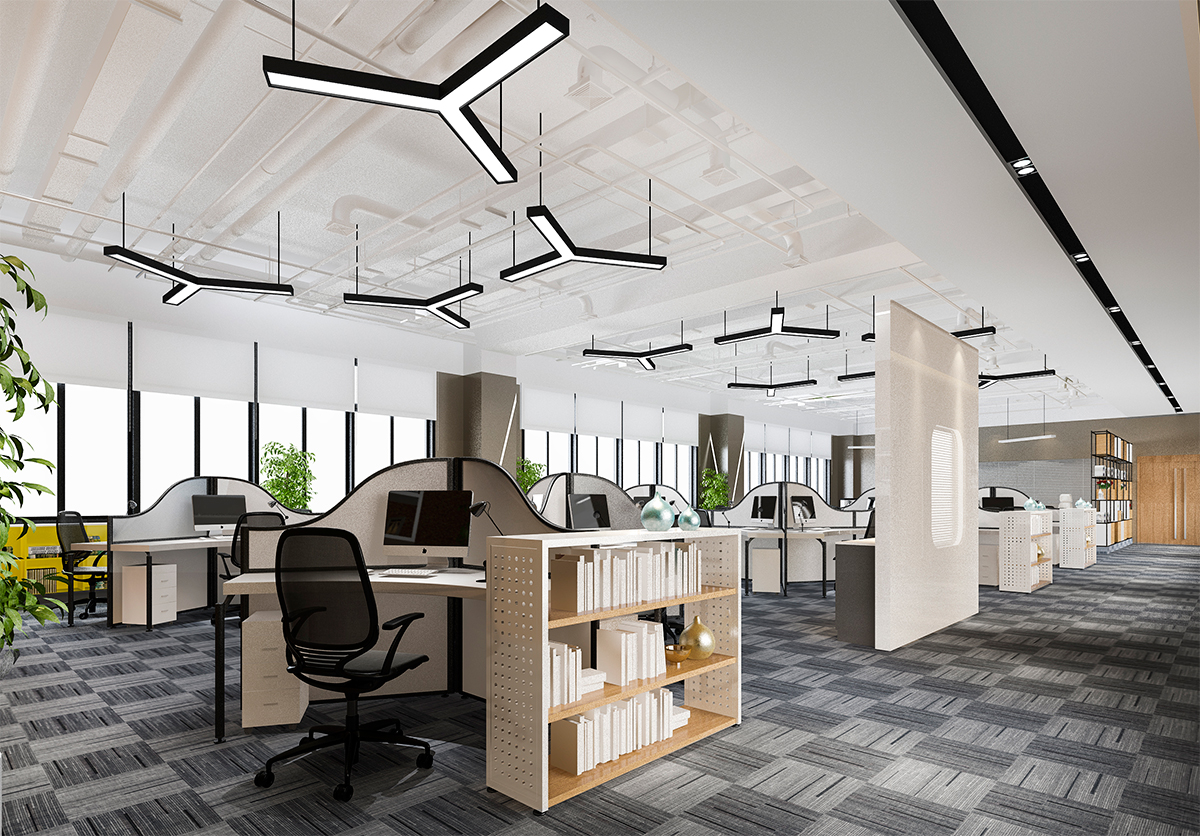
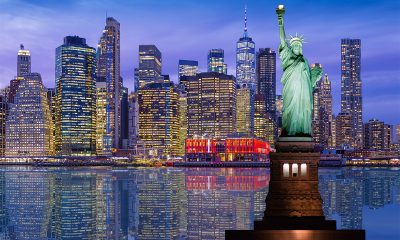
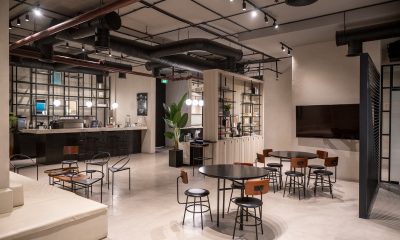
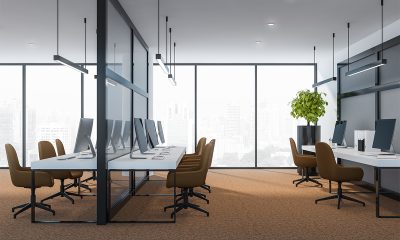
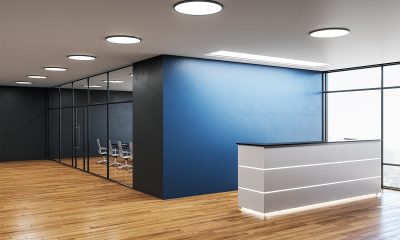
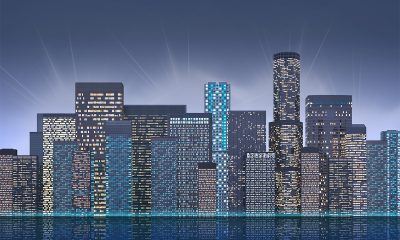
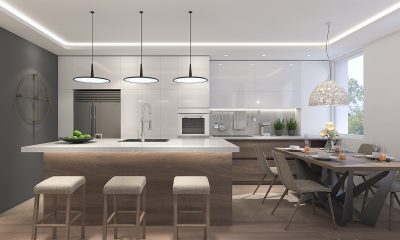
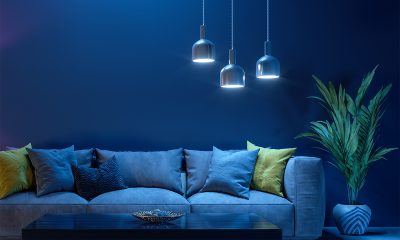
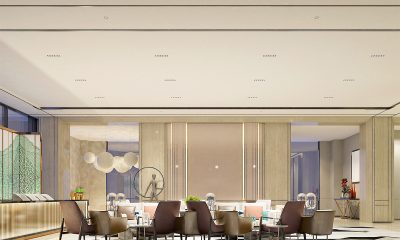
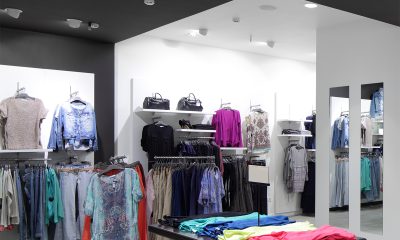
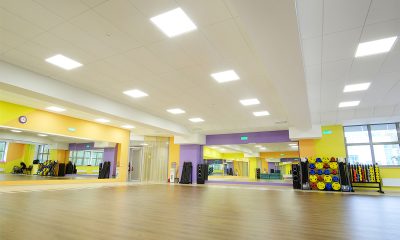
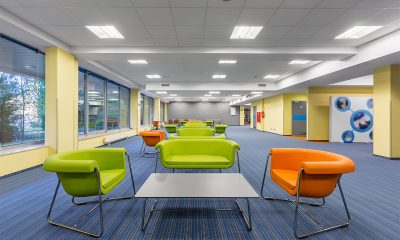
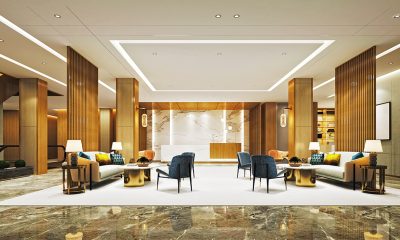





Loading...